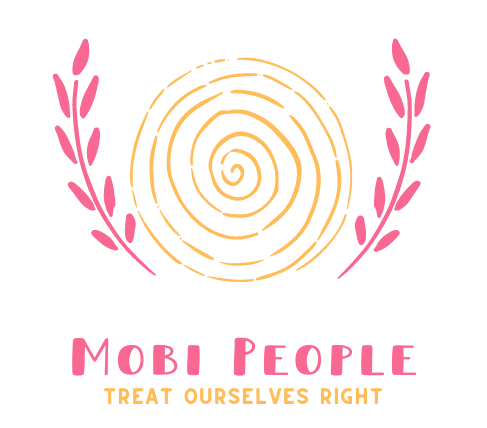Mental health is a very delicate topic to talk about, and one that can be difficult for people to understand. In this blog post, we will be discussing mental health assessment and diagnosis, as well as how these processes work. It may turn out that you need extensive therapy or will find the benefit of emdr therapy. Whichever one it is, getting help should always be a priority when you are suffering. We hope that this information will help you better understand mental health and the challenges that people face when dealing with it.
What is Mental Health?
Mental health is a term used to describe the state of mind or emotional well-being of an individual. People with mental health conditions may experience different levels of severity and might have different needs for treatment. Some people with mental health conditions do not require any specific treatment, while others may need support and intervention of a therapist from mental health counseling sites like https://www.lrclinical.com/, in order to live full and productive lives.
There is no one-size-fits-all approach to treating mental health conditions, but treatments typically include therapy or counseling, medication, social services, self-care activities (such as exercise or relaxation techniques), and support groups. Many people with mental health conditions also need access to support such as housing and employment opportunities.
Methods for Mental Health Assessment and Diagnosis
Mental health is assessed and diagnosed using a number of different methods. Some of the most common methods are:
- Diagnostic interviews: This is a type of interview used to gather information about a person’s mental health. The interviewer asks questions about the person’s symptoms, thoughts, and feelings.
- Self-report measures: These are tools used to measure mental health symptoms. They include questionnaires, scales, and logs.
- Clinical assessments: This is a type of evaluation that focuses on diagnosing mental disorders and assessing the patient’s needs for treatment. It includes interviews with the patient, family members, and other clinicians involved in the patient’s care.
- Neuropsychological tests: These tests can help diagnose conditions like depression, anxiety, and bipolar disorder. They assess how well the brain functions in different areas like memory, attention span, and problem-solving skills.
After successful diagnosis, mental health professionals such as those at bridgehopefamilytherapy.com, can combine different therapy methods to offer a more comprehensive approach. This approach ensures that the diagnosis is not only accurate but also considers the unique circumstances of each patient, leading to a more effective and personalized plan.
Differential Diagnosis and Misdiagnosis
Differential diagnosis and misdiagnosis are common in mental health care. In order to assess and diagnose a mental disorder, clinicians must first rule out other potential causes. Some of the most common causes of false positives or false negatives in mental health diagnoses include:
- Substance abuse and withdrawal: Many substances can cause similar symptoms, making it difficult to determine which condition is causing an individual’s problems.
- Mood disorders that are not related to a substance use issue: For example, major depressive disorder can be caused by physical illnesses or stressors unrelated to substance abuse, making it difficult to distinguish between the two conditions.
- Psychotic disorders: The symptoms of some psychotic disorders can resemble those of certain mental health conditions, leading to a misdiagnosis.
- Medical conditions: Some medical conditions can cause similar symptoms to those seen in mental health disorders. For example, thyroid disease can cause feelings of depression and anxiety.
- Sleep deprivation: Sleep deprivation can lead to changes in mood and behavior that mimic the symptoms of some psychiatric disorders.
Illness vs. Disorder vs. Trauma
Mental health is assessed and diagnosed in a variety of ways, but there are three primary models: illness, disorder, and trauma. Illness models focus on identifying symptoms that indicate an underlying problem. Disorders models identify specific disorders that people with mental illness suffer from, while trauma models focus on the effects of traumatic events on mental health.
There is no one perfect way to assess or diagnose mental health, and each model has its own strengths and weaknesses. For example, the illness model is good at identifying patterns of behavior that suggest an underlying problem, but it can be less effective at determining the cause of those problems.
The disorder model is better at pinpointing specific problems that people with mental illness experience, but it can be less accurate when it comes to predicting how long someone will experience those problems or what kind of treatment they will need.
The trauma model is best at recognizing the effects of traumatic events on mental health. However, it can be less effective at identifying the factors that led to those events.
Both models, though valuable in their own right, can be enhanced by focusing on individual recovery needs. For example, setting Smart goals for trauma recovery can provide a more personalized and structured approach to healing, ensuring measurable progress in emotional, psychological, and physical well-being. By creating clear, achievable objectives, individuals can navigate their recovery journey with a greater sense of purpose and direction.
That being said, mental health is an important topic that deserves to be talked about more often. Too often, mental illness goes undiagnosed and untreated due to the fact that people don’t know how to recognize it. Learning more about what mental health looks like can educate you on how you can help those around you who are struggling.
If you or someone you know needs help, please reach out for help. There are many resources available to assist those in need.


